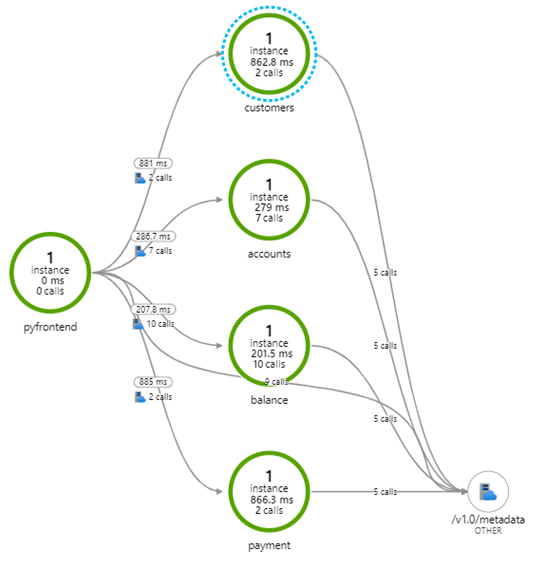Raincode 360 on Azure: make your mainframe applications truly cloud-native in Azure!

We are often asked about hosting mainframe applications on Azure. Leaving the mainframe is only part of the story. You should want more than that. Why would you go through the hassle of a complete migration project if you end up with something just as inflexible, as monolithic, and as intrinsically inconvenient as the platform you’re moving away from?
You don’t want your critical mainframe applications to simply run on a somewhat cheaper box either: you want to take advantage of the newest cloud-native technologies that are now available to you, technologies that allows for more flexibility, more scalability, and more evolutions of your applicative landscape.
But as for many other young concepts that you’ve seen before (think of client-server or object-orientation, for instance), the definition for cloud-native is still a bit unclear. You don’t want to be gaslighted with buzzwords, twisted to the point where they are empty of any meaning. Countless tools and systems in the world of mainframe migration are cloud-native in name only, paying lip service to the concept with little underlying substance, nothing more than a box to check in a marketing document.
In stark contrast, Raincode talks the talk and walks the walk when it comes to making its toolset as Azure cloud native as it gets:
- A true modular architecture which allows you to deploy containers with megabytes rather than gigabytes of payload, giving justice to the “micro” in micro-services.
- Adaptable when it comes to architecture, giving you the choice among a large variety of deployment models to best suit your environment and your requirements (Containers, Azure functions, web services, PaaS, IaaS, etc.).
- Extensively documented use cases running in production today and that demonstrate this variety.
- Access to the latest technologies (including dapr, AKS, Azure Container Apps and more).
Application map (as produced by Application Insight) of a Raincode cloud-native application, running in Azure Container Apps and where the components (COBOL, PL/I, python) communicate using dapr
Don’t just take our word for it: see the technology in action on Raincode 360!
Available on the Azure Marketplace, Raincode 360 is a fully configured system, including all Raincode products, together with sample code and data. In its latest version, which was made publicly available in December 2022, Raincode 360 was upgraded to rely on the latest technologies, including Azure Container Apps.
Try it out, run the cloud-native demos running in your Azure subscription, see them in action, and get a taste of how this technology can give a future to your mainframe applications.
Raincode 360 is – literally – just a click away. And by the way, it’s also free for you to enjoy extensively.
Learn more:
Mainframe to Cloud Native - Raincode
Contributors:
Larry Mead (Principal TPM, Microsoft)
Darius Blasband (CEO, Raincode)
Published on:
Learn moreRelated posts
Using Sempy to Authenticate to Fabric/Power BI APIs using Service Principal and Azure Key Vault
In this blog post, the author demonstrates how to use Azure Key Vault and Azure identity to authenticate securely when working with Fabric Not...
Unlock Your Python Potential with Azure
Microsoft's appreciation for Python's versatility and developer-friendly features has led to the creation of tools and resources aimed at assi...
Azure Lab Services - Lab Plan Outage
Azure Lab Services is currently experiencing an outage that affects Lab Plans, but not Lab Accounts. This outage intermittently impacts all op...
Azure Cosmos DB Conf 2024: Accelerating Innovation in AI and Data
The fourth annual Azure Cosmos DB Conf held on April 16, 2024, was a highly anticipated event for those at the forefront of cloud data managem...
New ‘ExecutionMetrics’ event in Azure Log Analytics for Power BI Semantic Models
The Power BI integration with Azure Log Analytics just got better with the introduction of a new event - 'ExecutionMetrics'. Customers can now...
Two options for Invoice Processing in Power Platform | AI Builder or Azure Document Intelligence
If you're looking to process invoices within the Power Platform, this tutorial will provide you with valuable insights into the available opti...
Azure Communication Services May 2024 Feature Updates
The Azure Communication Services team is excited to share several new product and feature updates released in April 2024. (You can view previo...
Azure Communication Services at the European Cloud and Collaboration Summits
If you're interested in Azure Communication Services, mark your calendar for the upcoming European Cloud and Collaboration Summit from May 14-...
Why CIOs Prefer Azure DevOps for Custom Development Projects
In today's fast-paced business environment, organizations require an IT infrastructure that can deliver agility, innovation, and speed to succ...
